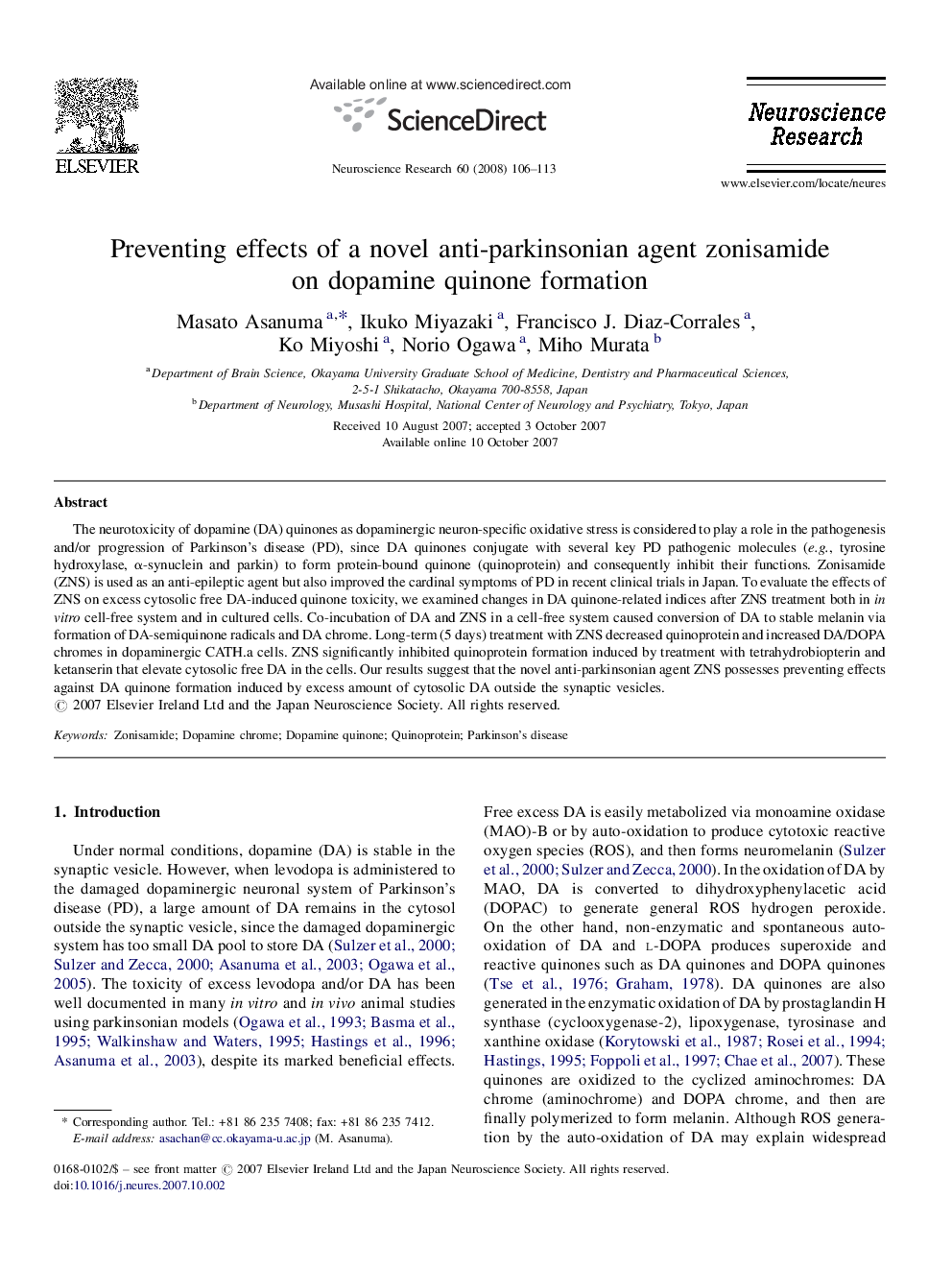| Article ID | Journal | Published Year | Pages | File Type |
|---|---|---|---|---|
| 4352446 | Neuroscience Research | 2008 | 8 Pages |
The neurotoxicity of dopamine (DA) quinones as dopaminergic neuron-specific oxidative stress is considered to play a role in the pathogenesis and/or progression of Parkinson's disease (PD), since DA quinones conjugate with several key PD pathogenic molecules (e.g., tyrosine hydroxylase, α-synuclein and parkin) to form protein-bound quinone (quinoprotein) and consequently inhibit their functions. Zonisamide (ZNS) is used as an anti-epileptic agent but also improved the cardinal symptoms of PD in recent clinical trials in Japan. To evaluate the effects of ZNS on excess cytosolic free DA-induced quinone toxicity, we examined changes in DA quinone-related indices after ZNS treatment both in in vitro cell-free system and in cultured cells. Co-incubation of DA and ZNS in a cell-free system caused conversion of DA to stable melanin via formation of DA-semiquinone radicals and DA chrome. Long-term (5 days) treatment with ZNS decreased quinoprotein and increased DA/DOPA chromes in dopaminergic CATH.a cells. ZNS significantly inhibited quinoprotein formation induced by treatment with tetrahydrobiopterin and ketanserin that elevate cytosolic free DA in the cells. Our results suggest that the novel anti-parkinsonian agent ZNS possesses preventing effects against DA quinone formation induced by excess amount of cytosolic DA outside the synaptic vesicles.
